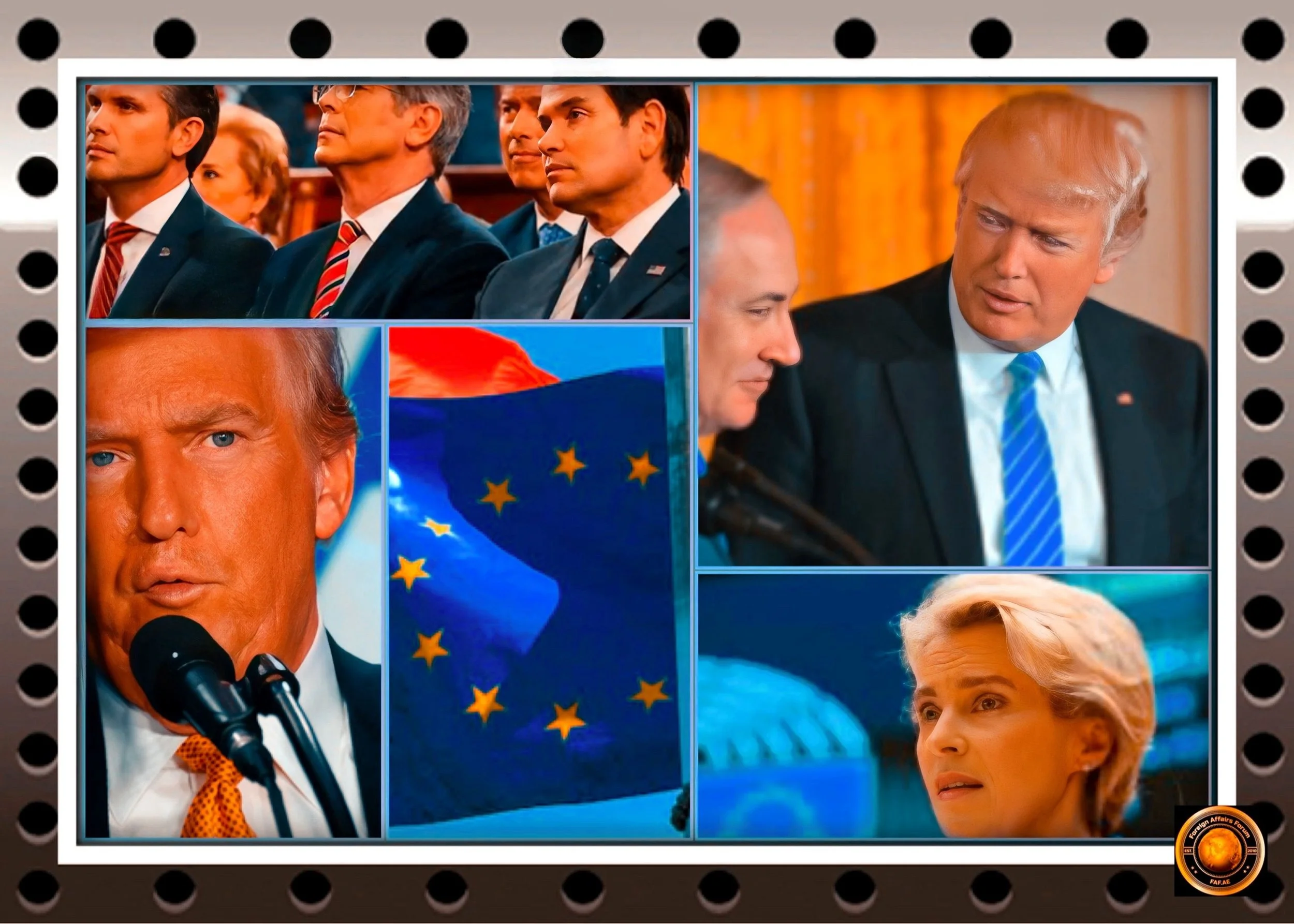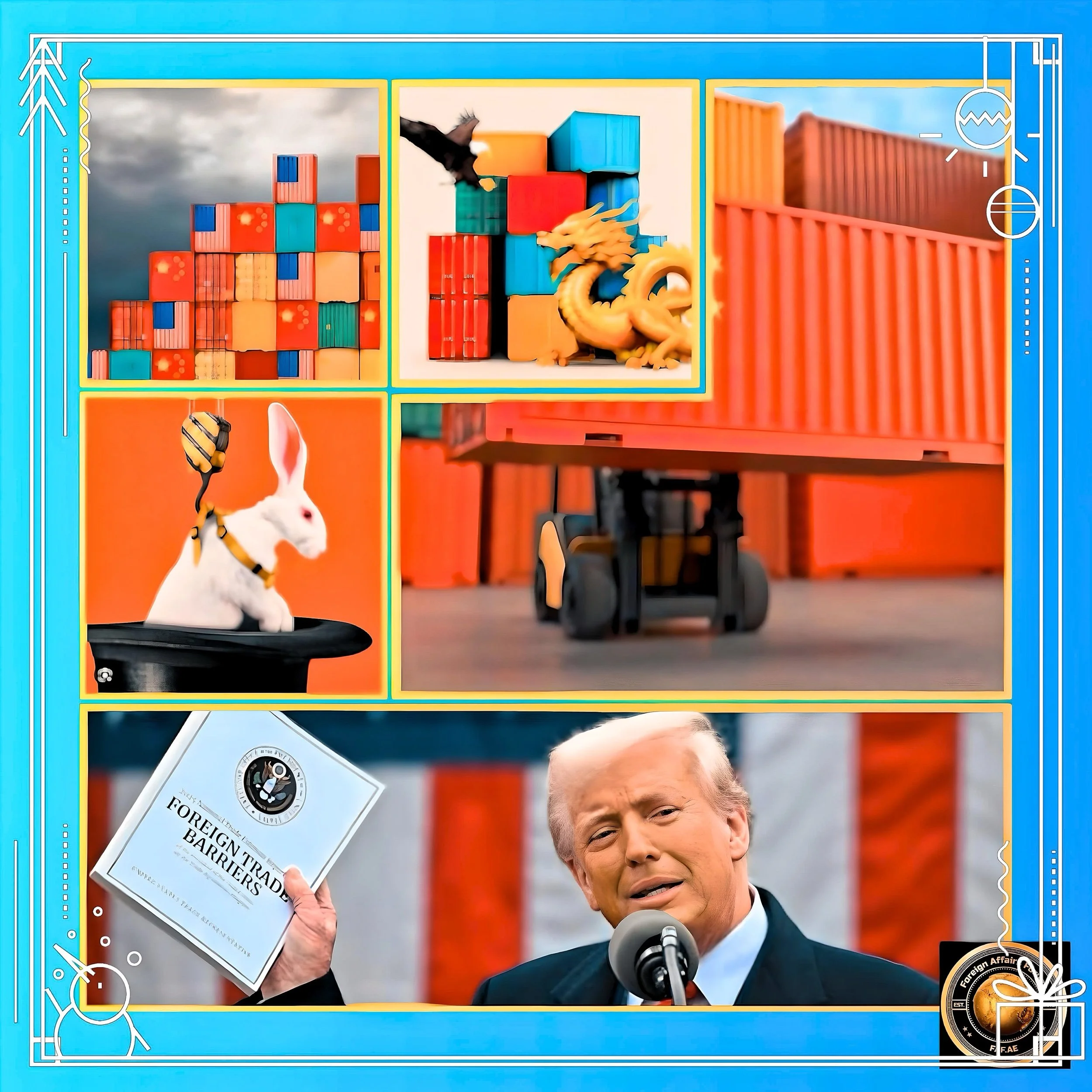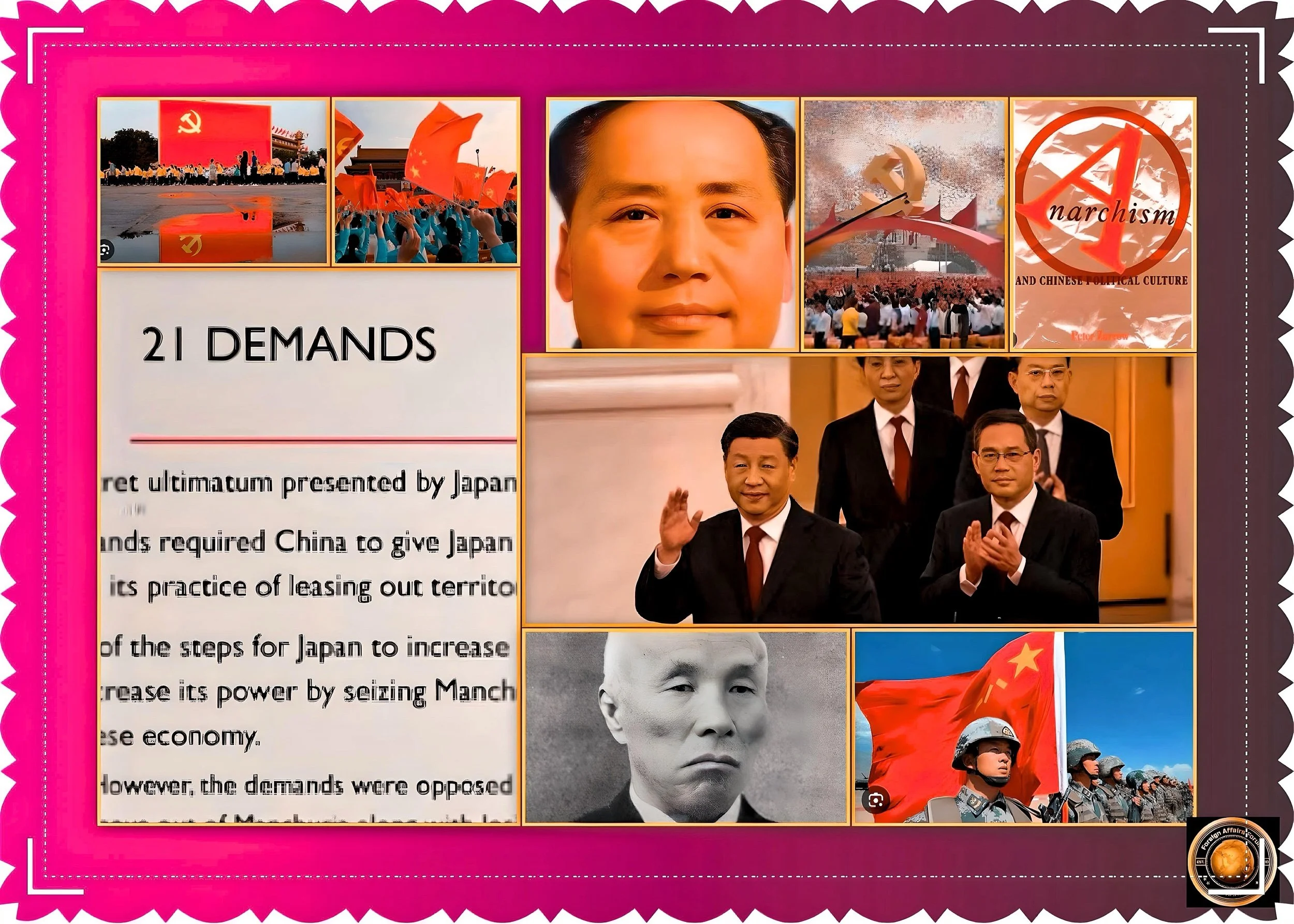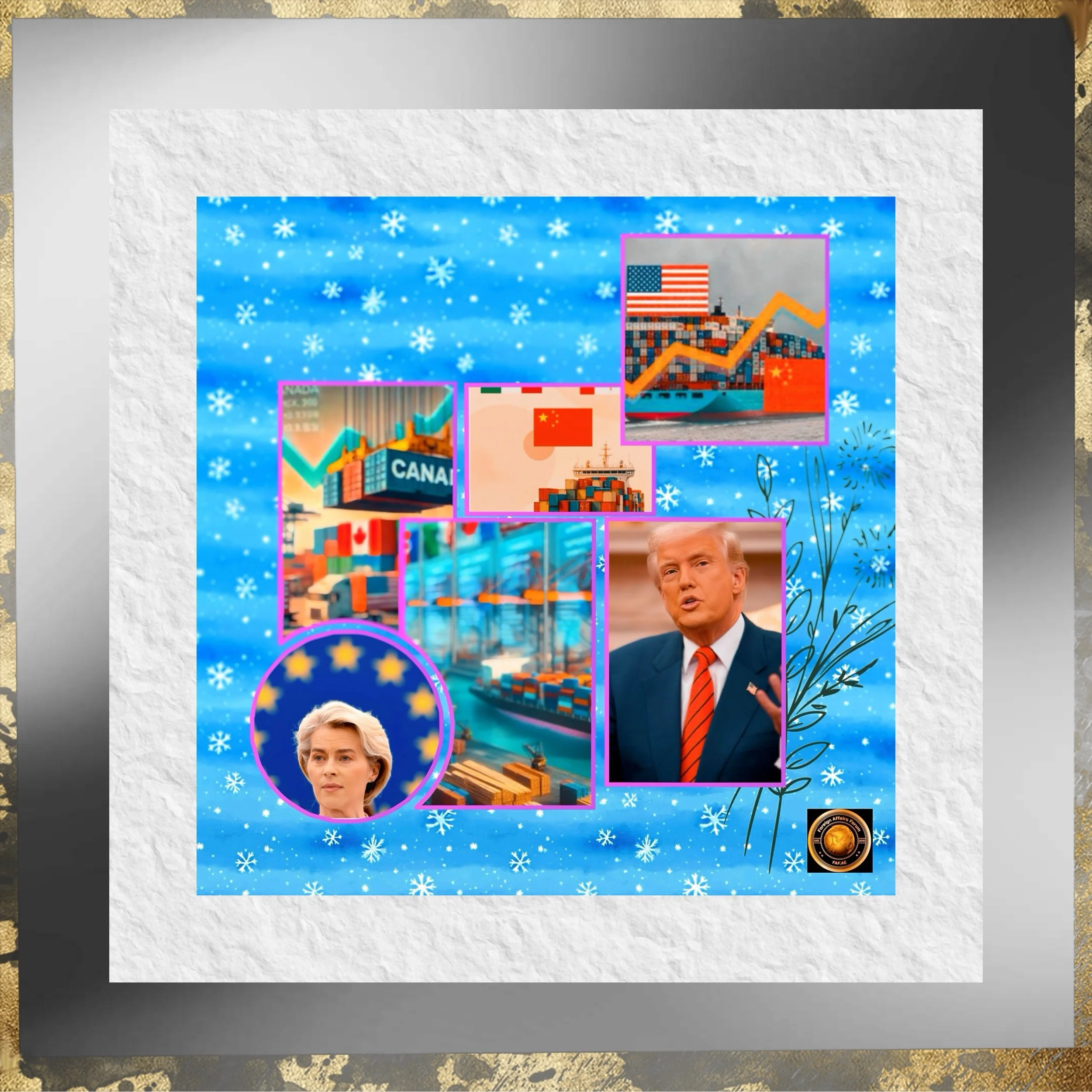Trump’s Foreign and Trade Policies: Analysis of Sustainability and Global Implications
Introduction
In recent months, the Trump administration has made a series of dramatic policy shifts in its approach to international affairs and trade relationships.
From abrupt tariff implementations followed by strategic rollbacks to controversial diplomatic engagements with Russia while maintaining tensions with China, President Trump has pursued policies that raise significant questions about their sustainability and implications for global relationships.
This comprehensive assessment examines the trajectory and viability of these approaches, considering both domestic support and international consequences.
Trump’s Tariff Strategy: The Short-Lived “Liberation Day”
President Trump’s economic policies took a rollercoaster in early 2025, with dramatic swings that sent markets into turbulence followed by calculated adjustments.
On April 2, 2025, Trump unveiled sweeping tariffs targeting major trading partners in what he described as “Liberation Day,” only to roll back most of these measures within a week.
The initial implementation of these broad tariffs caused immediate economic concern. The Tax Foundation estimated that Trump’s tariffs would reduce US GDP by 0.7 percent, with the April 2 tariffs alone accounting for a 0.4 percent reduction.
These measures threatened to eliminate over 605,000 full-time equivalent jobs across various sectors of the American economy. The tariffs were particularly problematic for industries dependent on global supply chains, including clean energy technologies and automobile manufacturing.
However, in a surprising reversal on April 9, the Trump administration announced a 90-day delay on duties for more than 75 countries while simultaneously increasing tariffs on China to 125 percent.
Treasury Secretary Scott Bessent framed this shift as a deliberate strategy: “Do not retaliate, and you will be rewarded."
This suggestion suggested the administration attempted to isolate China while encouraging cooperation from other nations. This sudden policy reversal sparked an immediate rally in stocks, bonds, and the US dollar.
Economic Sustainability Concerns
The sustainability of these tariff measures remains questionable from multiple perspectives. Economic analysts have highlighted several troubling factors:
Despite the administration’s claims that tariffs would rejuvenate U.S. manufacturing, address trade deficits, and enhance economic security, these justifications “now seem even more ludicrous” following the policy reversal.
The tariffs were projected to increase federal tax revenue by nearly $2.9 trillion over the next decade on a conventional basis, but only $2.3 trillion when accounting for negative economic effects—a $505 billion reduction.
According to Tax Foundation estimates, the imposed tariffs would reduce after-tax incomes by 1.9 percent on average, amounting to a tax increase of more than $1,900 per US household in 2025.
Public opinion strongly disapproves of Trump’s economic management. A CNN poll shows 56% of Americans disapprove of his handling of the economy—worse than at any point during his first term.
Trump’s Approach to International Conflicts: A Tale of Two Wars
The Trump administration has demonstrated markedly different approaches to the two major international conflicts currently underway: the Israel-Hamas war and the Russia-Ukraine conflict. This contrast reveals significant inconsistencies in foreign policy principles.
Preferential Treatment of Israel
The administration has shown unwavering support for Israel in its conflict with Hamas. Trump has “bent over backward to expedite delivery of military aid to Israel,” approving $12 billion in military sales since taking office on January 20, 2025.
This support extends beyond material aid to include symbolic gestures, with Trump calling US-Israel ties an “unbreakable” bond and Netanyahu hailing Trump as “the greatest friend Israel has ever had in the White House.”
Transactional Approach to Ukraine
In stark contrast, Trump has adopted what sources describe as a “transactional approach” to Ukraine’s conflict with Russia.
This was dramatically demonstrated during a February 28, 2025, meeting at the White House, which was described as “an unprecedented public confrontation between an American president and a foreign head of state.”
During this contentious encounter, “Trump and Vance repeatedly criticized Zelenskyy, sometimes drowning out his voice.”
Trump has been openly critical of Ukrainian President Volodymyr Zelenskyy, referring to him as “a modestly successful comedian” and “a dictator without elections,” despite Ukraine’s constitutional prohibition of elections during martial law.
Following the confrontational White House meeting, the Trump administration suspended intelligence and military aid to Ukraine for approximately a week.
Diplomatic Isolation Concerns
This divergent approach to international conflicts has raised significant concerns about potential diplomatic isolation. European leaders were reportedly “in a state of shock” following Trump’s direct 90-minute phone call with Russian President Vladimir Putin without consulting Ukraine or NATO allies.
The Trump administration has fundamentally undermined European confidence in US commitment to NATO, with some European defense ministers and intelligence chiefs describing the approach as “appeasement.”
U.S. Relations with Russia and China: The “Reverse Nixon” Strategy
President Trump has explicitly stated his intention to improve relations with Russia while maintaining a hardline stance on China, a strategy some analysts have termed the “reverse Nixon” approach—referencing America’s Cold War efforts to divide Moscow and Beijing.
The Russia Gambit
Trump has expressed his intention to improve ties with Russia, stating to Fox News: “As a student of history, which I am — and I’ve watched it all — the first thing you learn is you don’t want Russia and China to get together.” Some have interpreted this approach as an attempt to split Moscow from Beijing.
However, Secretary of State Marco Rubio has dismissed this notion, warning that while the US wants to prevent Russia from becoming China’s junior partner, having the nuclear-armed neighbors at odds would be bad “for global stability.”
Confrontational Approach to China
While pursuing improved relations with Russia, Trump has maintained a confrontational stance toward China. His administration has hiked tariffs twice in China’s economy, culminating in a recent increase of 125% while other countries have received a tariff pause.
Despite these tensions, Trump has yet to hold direct talks with China’s leader, contrasting with his direct communications with Putin.
Strategic Viability Questions
The effectiveness of this attempted strategic separation appears highly doubtful. On April 2, 2025, Chinese Foreign Minister Wang Yi concluded a three-day visit to Moscow, where he met with Russian Foreign Minister Sergey Lavrov and President Putin.
The tone and substance of statements from both sides “cast serious doubts about U.S. President Donald Trump’s ability to drive a wedge between China and Russia, undermining the viability of the so-called ‘reverse Kissinger’ strategy”.
Wang’s visit was primarily focused on preparing for a Moscow summit between Putin and Chinese President Xi Jinping in May 2025, signaling continued strong relations between the countries.
The Chinese foreign minister outlined three major goals driving the China-Russia relationship: strengthening economic and energy cooperation, sharing innovation and deepening industrial integration, and boosting global development.
Domestic Support for Trump’s Policies
The sustainability of Trump’s foreign and trade policies depends significantly on domestic support, which currently presents a mixed and polarized picture.
Approval Ratings and Economic Perception
According to recent polling data, Trump’s overall job approval rating stands at 45%, with 54% disapproving—matching his highest ratings from his first term in office. However, his approval on specific issues varies significantly:
Economy
56% disapprove of his handling of the economy, worse than at any point during his first term
Immigration
51% approve of his work on immigration, 7 points higher than at any point during his first term
Tariffs
Only 39% approve of his handling of tariffs
Foreign affairs
42% approve of his approach to foreign policy
A PBS News/NPR/Marist poll similarly found Trump’s job approval “underwater,” with 49% disapproving and 45% approving, though this represents higher support than at any point during his first term.
Partisan Divide and Public Perception
Trump’s support remains highly polarized along party lines. The PBS News poll found that “impressions were divided strongly along party lines, and none of the people they spoke to changed their views of Trump since the election”.
Poll respondents described the president’s first month as everything from “fabulous” to “chaos” to “disaster”.
There is broad agreement across party lines (86% of Americans) that Trump is “taking a completely different approach to presidential power in comparison to past presidents,” though opinions differ on whether this is positive or negative.
Implications for India and Democratic Values
The questions posed suggest concerns about how democracies should respond to Trump’s policies. As the world’s largest democracy, India faces particular challenges in navigating the complex international environment shaped by Trump’s approach.
India’s Strategic Considerations
India must carefully balance its relationships with the US, Russia, and China in this evolving geopolitical landscape. With traditional ties to Russia for defense procurement and ongoing border tensions with China, India’s strategic autonomy is being tested by the polarizing nature of Trump’s foreign policy.
The sustainability of Trump’s tariff policies directly impacts India’s export-oriented sectors. While India was among the countries granted a tariff pause in Trump’s recent rollback, the unpredictability of his trade approach creates significant uncertainty for long-term economic planning.
Democratic Principles in Policy Evaluation
The fundamental question of whether democracies should support policies based on their correctness rather than loyalty to leaders aligns with core democratic values.
Democratic systems are designed to enable policy evaluation based on outcomes and adherence to principles rather than personal allegiance.
The evidence suggests Trump’s policies face significant sustainability challenges:
Economic metrics indicate negative impacts from tariffs on American GDP, jobs, and household incomes
International isolation concerns are validated by European reactions to Trump’s Russia approach
The strategy to separate Russia and China shows little sign of success
Domestic support remains polarized and negative on key economic policies
Conclusion
The sustainability of President Trump’s current foreign and trade policies faces serious challenges on multiple fronts. Economically, the tariff approach threatens GDP growth and job creation while increasing costs for American households.
Diplomatically, the inconsistent treatment of international conflicts risks alienating traditional allies while failing to achieve the strategic separation of Russia and China.
Domestically, Trump maintains support primarily along partisan lines, with majority disapproval of his economic and tariff policies. This polarized environment limits the political sustainability of his more controversial approaches.
For democracies worldwide, including both the United States and India, the evidence suggests careful, principled assessment of specific policies based on their merits and outcomes rather than blanket support or opposition is the approach most consistent with democratic values.
The coming months will be crucial in determining whether the administration adjusts its approach to address these sustainability concerns or faces increasing domestic and international resistance.






